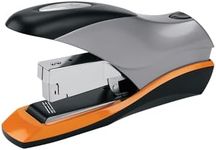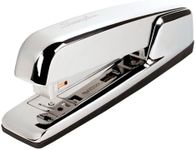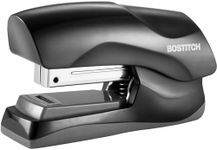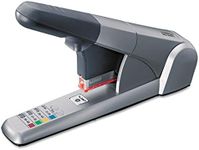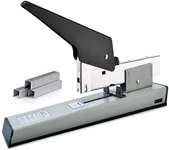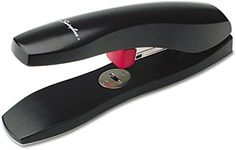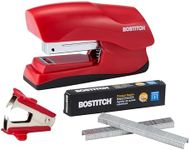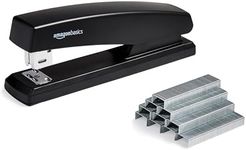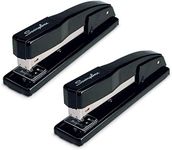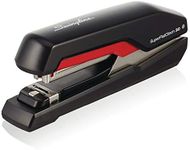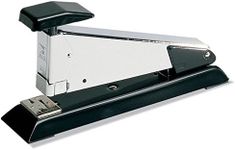Buying Guide for the Best Desk Staplers
Choosing the right desk stapler might seem simple, but the right choice can make your daily tasks much easier and more efficient. A good stapler should match the amount and type of paperwork you handle, feel comfortable in your hand, and be reliable over time. By understanding the key features, you can select a stapler that fits your work style and needs, whether you’re using it occasionally at home or all day in a busy office.Stapling CapacityStapling capacity refers to the maximum number of sheets a stapler can fasten together at once. This is important because using a stapler beyond its capacity can cause jams or incomplete stapling. Staplers are usually divided into light-duty (up to 20 sheets), medium-duty (20-40 sheets), and heavy-duty (over 40 sheets). If you mostly staple a few pages at a time, a light-duty stapler is sufficient. For frequent or thicker document stapling, consider a medium- or heavy-duty model. Think about the typical size of your document stacks to guide your choice.
Staple Size CompatibilityStaple size compatibility means the range of staple sizes a stapler can use. This matters because different tasks may require different staple lengths for secure fastening. Most standard staplers use 1/4-inch staples, suitable for everyday paperwork, while heavy-duty staplers may use longer staples for thicker stacks. Check what staple sizes are available and easy to buy in your area, and match the stapler to the type of documents you handle most often.
Loading MechanismThe loading mechanism is how you insert new staples into the stapler. This is important for convenience and speed, especially if you use the stapler often. Common mechanisms include top-loading, rear-loading, and front-loading. Top-loading is the most common and straightforward, while front-loading can be easier to use in tight spaces. If you want quick and hassle-free reloading, look for a mechanism that feels intuitive and suits your workspace.
Stapling StyleStapling style refers to how the stapler fastens papers—either flat-clinch, standard clinch, or temporary pinning. Flat-clinch staplers press the staple ends flat, making stacks neater and saving space, while standard clinch bends the ends inward. Some staplers also offer a pinning option for temporary fastening. If you want tidy stacks or often file stapled documents, flat-clinch is a good choice. For general use, standard clinch is usually enough.
Build Quality and ComfortBuild quality and comfort relate to the materials used and how the stapler feels in your hand. A sturdy, well-made stapler will last longer and work more smoothly, while a comfortable grip reduces hand fatigue during frequent use. Metal staplers are generally more durable, while plastic ones are lighter. If you staple a lot, look for ergonomic designs with cushioned grips. For occasional use, a basic model may be fine.
Size and PortabilitySize and portability refer to how big the stapler is and how easy it is to move or store. Full-size staplers are best for desks and frequent use, while compact or mini staplers are good for carrying in a bag or using in small spaces. If you need a stapler on the go or have limited desk space, a smaller model is ideal. For heavy or regular use at a fixed spot, a larger, more robust stapler is better.
